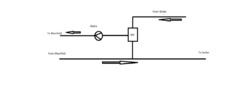Boardroom
Member
I would think it would be a simple setup as in the attached sketch. Yes John - I would just be experimenting with it manually for now.
I have only used the " Auto" setting on the Alpha. Would another setting be better? I guess I could read the manual someday.
I have only used the " Auto" setting on the Alpha. Would another setting be better? I guess I could read the manual someday.


